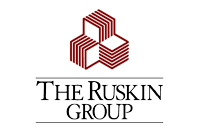Food has to look appetizing! Whether it’s on a plate, in a package or on a store shelf, the food industry is strongly driven by product appearance and branding. Combined with consumer demands for clean ingredient labels and simple packaging, presenting a product that fairs well in the marketplace can be difficult.
Often considered an “elite” form of packaging, ultrasonic banding is a relatively new alternative that offers brand owners and copackers the ability to improve the appearance of their food products while minimizing waste and improving production efficiency without compromising product integrity.
Of the many benefits of banding, three directly apply to the food industry:
1. Adhesive-free decorating
Whether you’re labeling directly on products, multi-packing or using sleeves as secondary packaging, all labels need to comply with Food and Drug Administration regulations. While some adhesives are food-safe, they can accumulate dust, dirt and debris, making label adhesion weaker than desired and unattractive to consumers.
With ultrasonic banding, a label or sleeve can be applied to products without using any adhesives. Not only does this keep a strong hold on products, it can also lower the cost of each label and reduce the amount of packaging waste generated while still being easily separated for recycling.
Depending on branding needs, a variety of banding materials can be used:
• Paper is one of the most economical materials available. The most popular is a thicker paper that replaces chipboard or paperboard sleeves.
• Opaque white plastic is silky smooth and provides high-impact branding through vibrant graphics.
• Transparent film is used for maximum product visibility. This film lets products speak for themselves with minimal light refraction. Pre-printing on transparent film can supplement the product with branding and also replace expensive die-cut labels.
Each of these materials are available in a variety of thicknesses as well as widths ranging from 15 millimeters to 100 millimeters (0.5 inches to 4 inches). For applications requiring variable data to be printed live on the band, there are inline printing options for customizing products with barcodes, expiration dates, recipes and nutritional information.
2. Transparent food packaging
Clean food is taking the food industry by storm. Not only are consumers more interested in what’s in their food than ever before, they want to see it more than ever before too. Brands are responding to these demands with transparent packaging that keeps products visible on store shelves.
But, when secondary and tertiary packaging come into play, accommodating transparent packaging can become more of a hassle—materials are too opaque and require secondary branding or the packaging quality is low and non-recyclable.
With banding, consumers can have the best of both worlds—informative packaging with nutritional information while maximizing product visibility. For brands, banding provides the opportunity to improve customer loyalty since they can read the product information and see the high-quality products they’re going to consume.
3. Sustainability
According to Pew Research and projections from the U.S. Census Bureau, Millennials are projected to “overtake [Baby] Boomers in population in 2019 as their numbers swell to 73 million.” Of these 73 million Millennials, almost 75 percent are willing to pay more for products that promote sustainability. Since Millennials are a key target demographic for the food industry, this data is critical and brands are responding quickly.
With banding, brands and copackers can improve and promote sustainability in several ways:
• Products: Clean, sustainable branding and packaging can help convey a dedication to sustainable food practices that often result in consumer loyalty.
• Business: Maintaining sustainable processes keeps business effective and efficient, especially with a low unemployment rate making labor-intensive positions increasingly difficult to fill. From cutting costs and eliminating worker injury to reducing downtime and increasing throughput, banding is a sustainable packaging solution that combines several packaging steps (counting, stacking, bundling, labeling) into one to improve overall efficiency without breaking the bank.
• Environment: With nearly 45% of landfilled materials coming from food and packaging/containers, using recycled and recyclable materials that generate minimal waste is crucial. Not only are banding materials FDA-approved and water resistant, they’re fully recyclable. With only one small band needed on most applications, reducing waste is easier than ever.
Lisa Barrieau is the food banding sales manager at Felins, a leading niche packaging company in Milwaukee, WI. Passionate about sustainable food packaging, Barrieau helps companies in the fast-paced food industry to increase throughput, decrease packaging waste, reduce labor costs and develop sustainable and innovative packaging processes. Contact her at [email protected].
********************************************************************************
EastPack 2019 (June 11-13) is the region’s premier packaging event connecting professionals from companies like PepsiCo, Pepperidge Farms and Mars with suppliers offering the latest packaging technologies, including a range of automation solutions, from semi-automatic equipment to sophisticated “smart” systems. Register to attend today!
 https://www.packagingdigest.com/food-packaging/3-benefits-of-banding-for-food-packaging-2019-03-19
https://www.packagingdigest.com/food-packaging/3-benefits-of-banding-for-food-packaging-2019-03-19
Comments are closed.

